Secondary monitors aren’t new, but Corsair’s Xeneon Edge doesn’t try to be just another portable panel. Instead, it aims to reinvent what a companion display can be—sleek, touch-enabled, and versatile enough to live under your monitor, on an arm, or even inside your PC case. It’s not about throwing more pixels at you; it’s about creating a dedicated space for the things you always want in view—your chat, system telemetry, timelines, or macros—without cluttering your main screen or your desk.
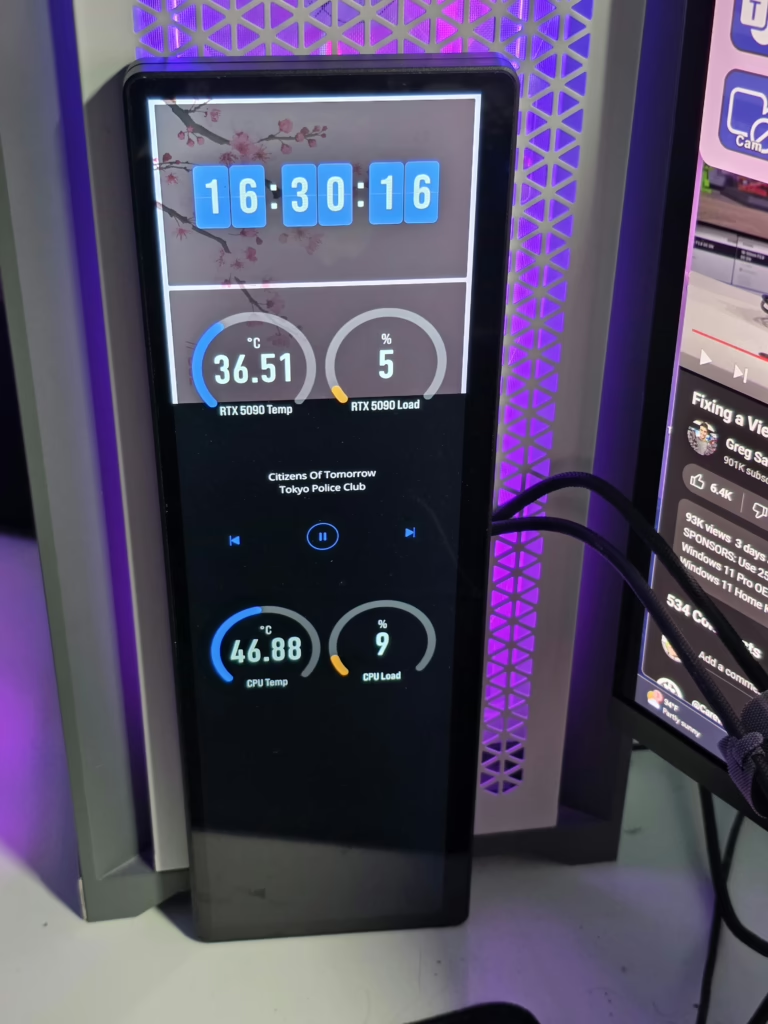
Its ultra-wide touchscreen form factor, paired with Corsair’s iCUE and Stream Deck software support, makes it feel less like a display and more like an extension of your entire desktop environment. It’s a bold attempt to carve out a new category of “always-on” desktop utility, and one that immediately sparks curiosity: is this the missing piece your setup didn’t know it needed? Let’s take a further look.
What is it?
The Xeneon Edge is a 14.5″, 2560×720 (32:9) touchscreen. It’s Corsair’s bid to create a new category of always-on dedicated dashboard, a sort of hybrid between a Stream Deck and a tiny monitor. As mentioned above, the Xeneon Edge embraces a unique, ultra-wide format aimed at users who want glanceable data and control without disrupting their main workspace. But what really sets it apart is how it blends function with form—it’s not just about where it fits, but how well it behaves once it’s there. Mounted inside a case or under a monitor, it introduces virtually no heat, no cable sprawl, and no friction to your setup.
With an MSRP of $249, it sold out quickly upon its initial launch. The community excitement has been palpable since the Xeneon Edge was announced, and we couldn’t wait to get our hands on it. The specs are quite impressive, and it’s immediately apparent how high-quality this display is once you have it in person.
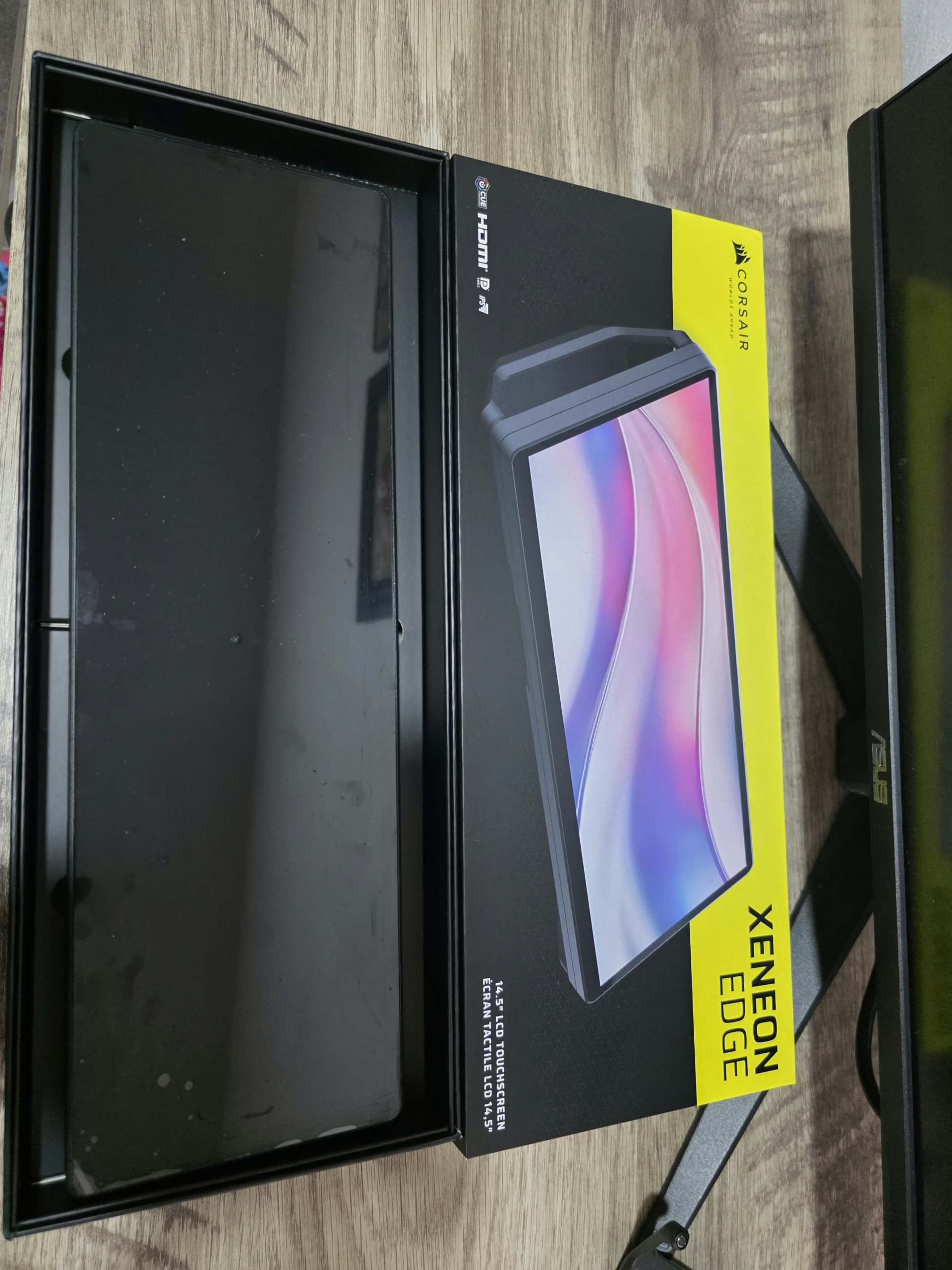
The display itself runs at a crisp ~183 PPI, a 60 Hz refresh rate, and a peak brightness around 350 nits—plenty sharp for dashboards, chat, or editing timelines. Its five-point capacitive touch makes swiping through widgets and tapping controls feel natural, and the long, thin form factor is perfectly suited for “glanceable” information. Corsair says it will release more widgets monthly starting in summer 2025. Here is what’s currently available:
• Image/video: Displays an image, animated GIF, or a video.
• Slideshow (gallery): Turns part of the screen into a photo frame, tap on either side to advance or let it cycle
automatically.
• iFrame code: iFrame technology allows embedding supported websites and widgets such as SimHub
integration, productivity widgets, stock prices, weather, etc.
• Launch App: Adds a link to open apps and websites. A single small widget allows up to 3 apps, medium-size widgets allow up to 9, and you can have as many Launch App widgets as you like on multiple pages.
• Twitch Chat: Read your favorite Twitch chat while playing or stream your channel’s chat while streaming.
• YouTube video: Watch a video while using your main display.
• Sensor chart: Select one of the available sensors for system monitoring. More widgets and skins for sensors
are in the works.
• Volume control: Allows control of the system and per-channel volume using the touch screen.
• Media control: Control your media player without distraction from gaming using the Windows Media API.
• Windows notifications
Corsair’s clever engineering is what makes the Edge stand out. The panel sticks to any ferrous surface as it has 14 embedded magnets for quick placement, dual ¼-20 mounts for arms and rigs, and just two simple connections—USB-C (with DP Alt-Mode) or HDMI. Its magnet array is strong enough to hold firm inside a case, but mounting on uneven or mesh panels may require adjustments to avoid tilt or vibration.
While the Edge can run through a single USB-C cable if your GPU supports DP-Alt Mode, many users will need both HDMI and USB-C connections. That’s an extra cable and potential friction point for clean-desk purists.
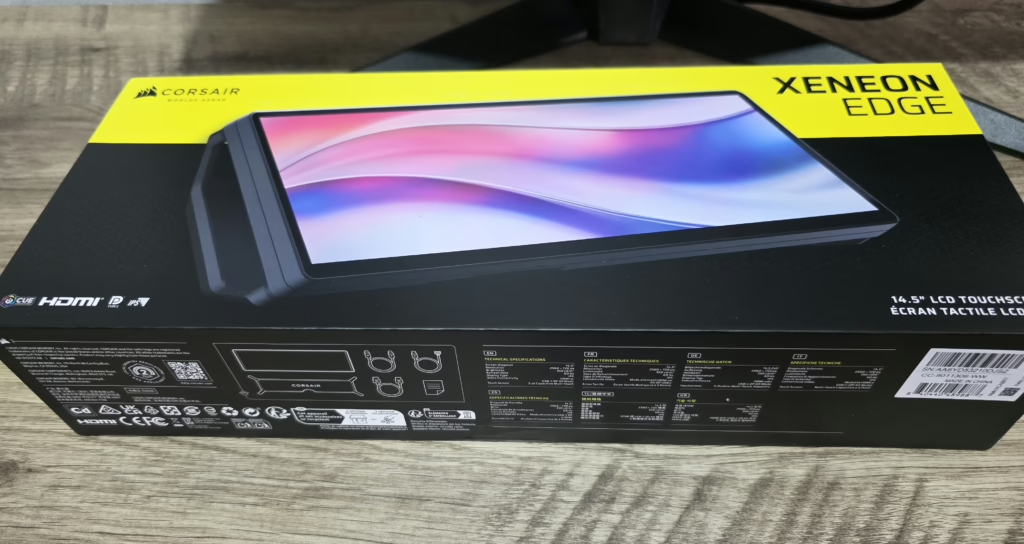
And if you’re building in a Corsair FRAME series case, you can get the best possible integration by using the optional LCD Side Panel Mount, which creates one of the cleanest, most integrated setups imaginable for the Xeneon Edge.
Why It’s Interesting: A New Take on Desktop Utility
The Xeneon Edge’s form factor is Corsair’s masterstroke. The long, thin, 32:9 strip is a perfect fit for a variety of use cases without hogging screen real estate or cluttering a desk. It’s an ideal home for Discord or Twitch chat, system telemetry readouts, music controls, or video editing timelines. The design is less about adding raw pixels and more about creating a dedicated space for “glanceable” information, freeing up your main monitor for the task at hand. This practical approach to secondary displays is what makes them so popular, and it’s a breeze to set up.
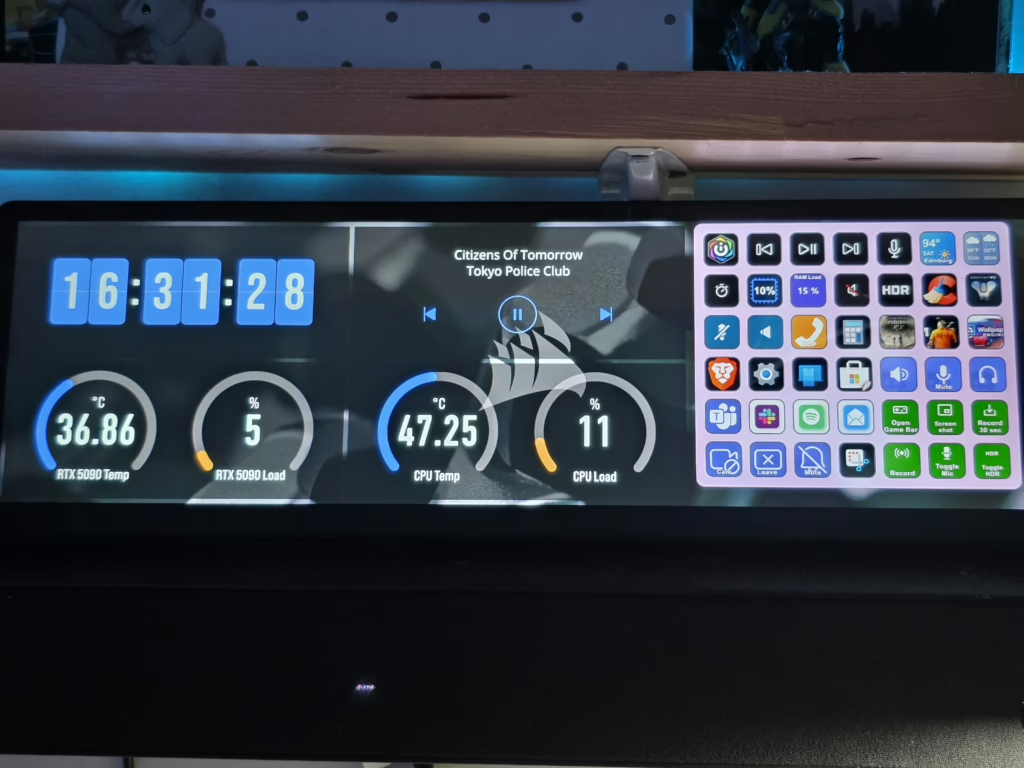
Mount Anywhere: Mounting flexibility is arguably the most compelling feature. The included magnetic desk stand is functional, but the real magic lies in its versatility. It can magnetically adhere to a PC case’s PSU shroud or side panel (it fits perfectly where a 360mm radiator would), or be attached to a professional AV arm using the dual ¼-20 mounts. This chassis-agnostic approach makes it a perfect accessory for custom PC builders and sim racers alike.
The I/O of the Corsair Xeneon Edge is minimalist by design: a single USB-C port with DP Alt-Mode for a one-cable solution, and a full-size HDMI port. There’s no downstream USB hub or DisplayPort-in, which limits its flexibility as a central hub but simplifies its overall purpose. DisplayPort Alternate Mode is a feature that allows a USB-C port to send and receive video, audio, and data signals simultaneously over a single cable.
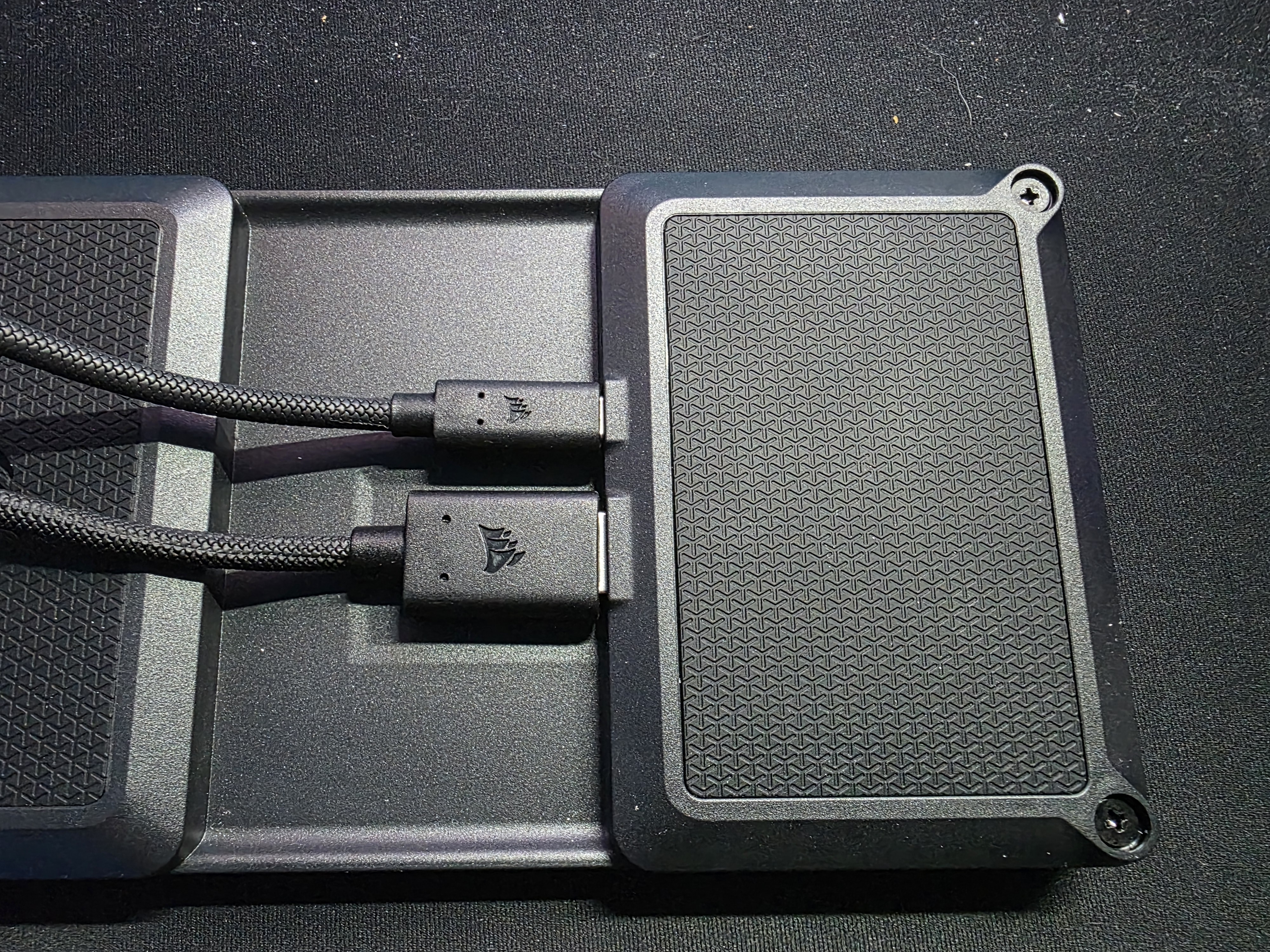
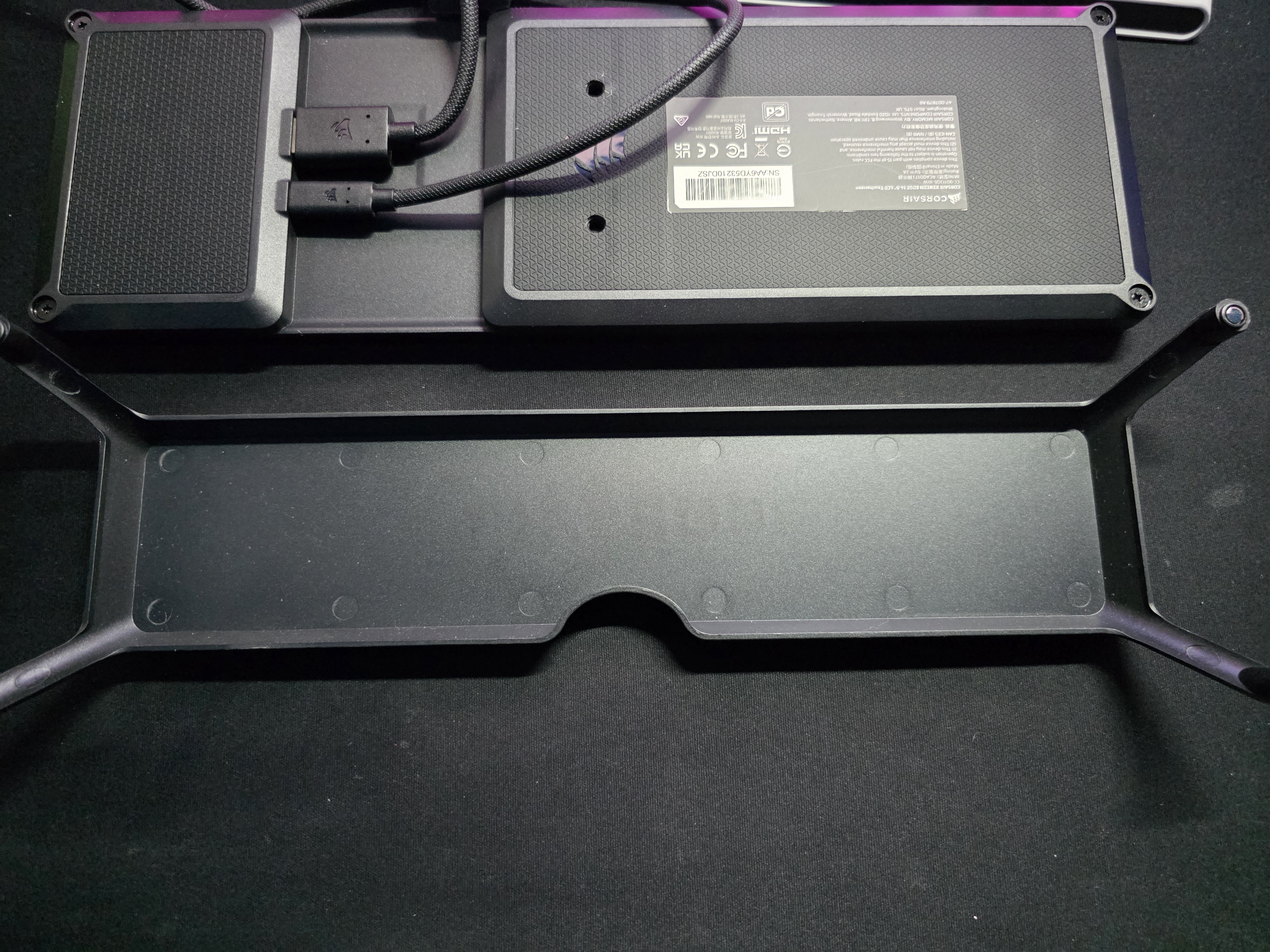
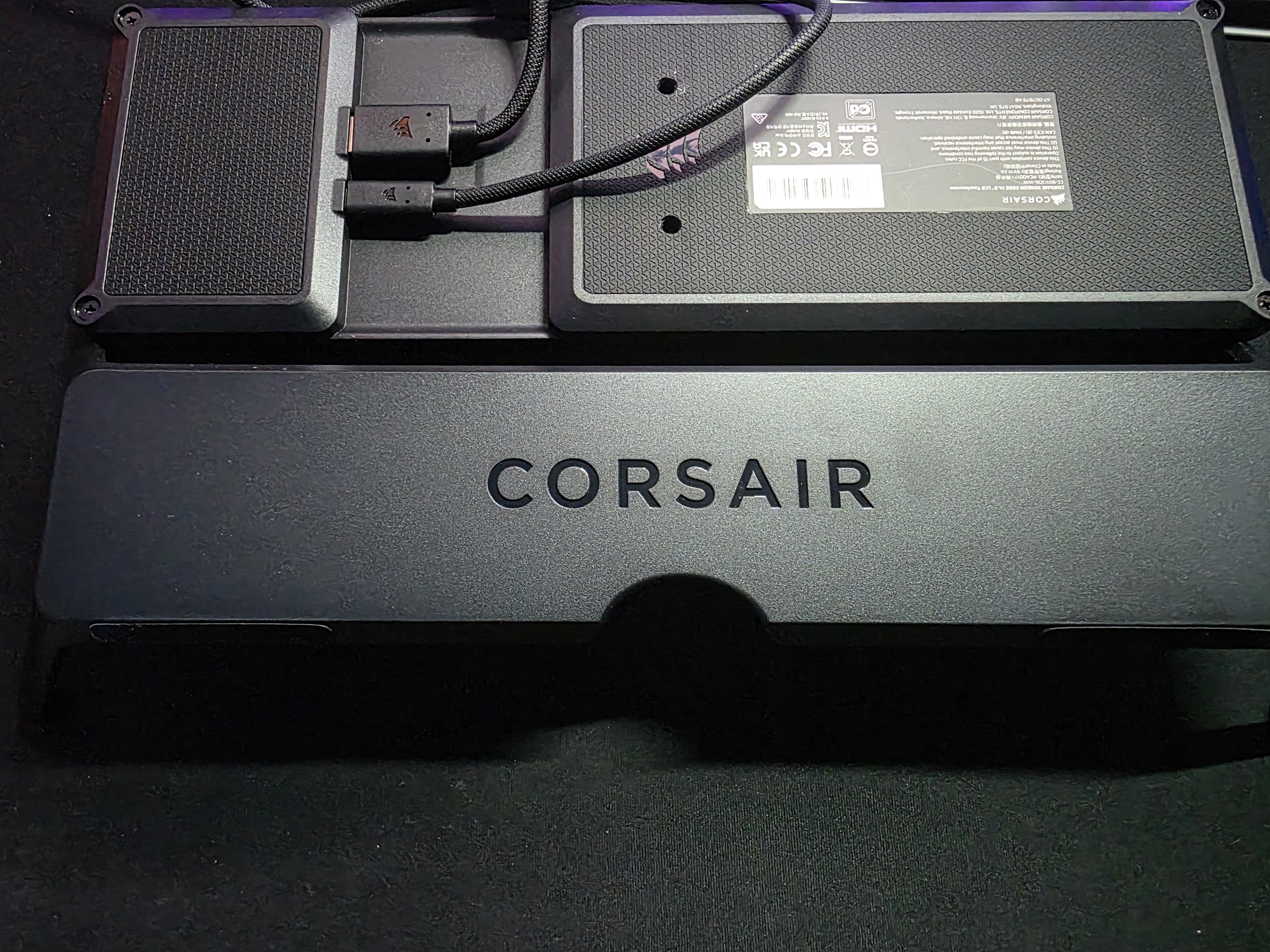
Widgets Galore:
iCUE’s widget system is the heart of the Edge’s functionality:
- Media, Image/Video & Audio Controls: Play videos or slideshows, control playback and volume (support for .mp4, .jpg, .gif, etc.).
- Volume Control Widget: Easily modulate audio sources by touch—perfect for switching between game, music, and chat volumes with a swipe.
- Twitch Chat Widget: Keep viewer messages in view without obscuring your main monitor.
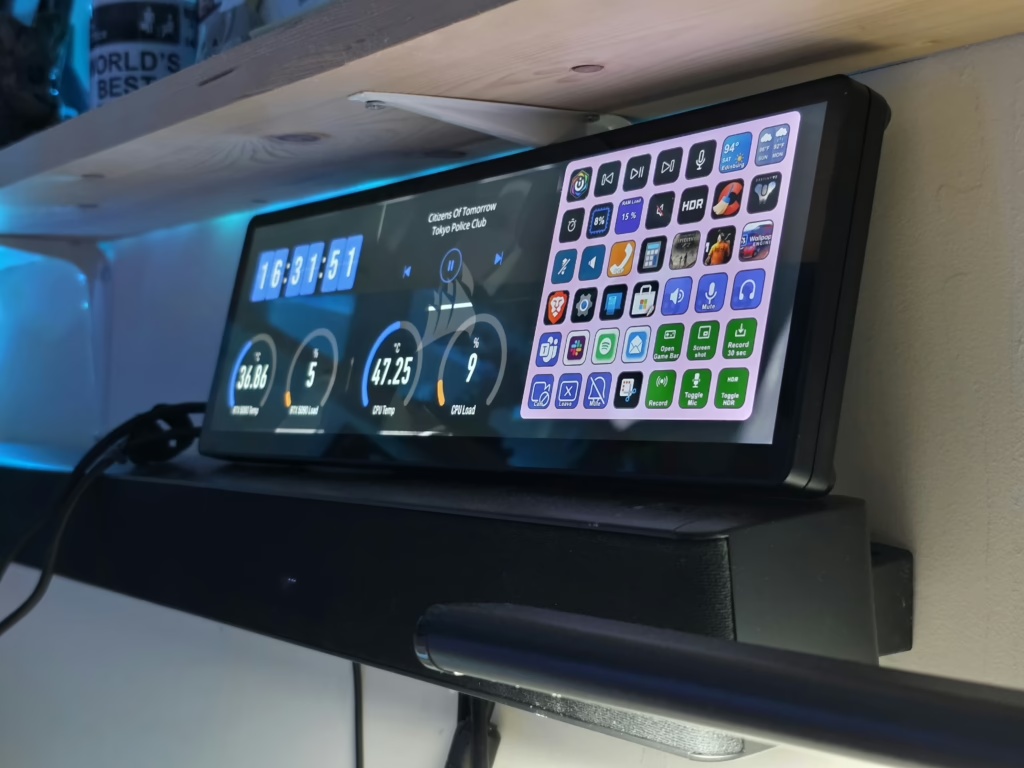
And here’s the real game-changer:
iFrame Widget: Embed live web content—think timers, news feeds, forums, or dashboards—directly onto the Edge. Somewhat like having a mini browser embedded in your screen, all controlled via iCUE. This was the most effective tool for me, as I felt Corsair’s default widgets were great but limited at launch. I could add my own weather widgets, or a Teams feed, or even monitor my employees in the call queue without the need to take up an entire larger screen. I wish there were more community features included with moderation. I think this has the potential to grow massively, and I love Elgato’s solution that Corsair is working to integrate better so you have access to their icon packs, plugins, and marketplace so Corsair doesn’t have to fullt reinvent the wheel.
On the screen, you can swipe through multiple widget pages to control media, adjust audio sources, or keep an eye on Twitch chat.
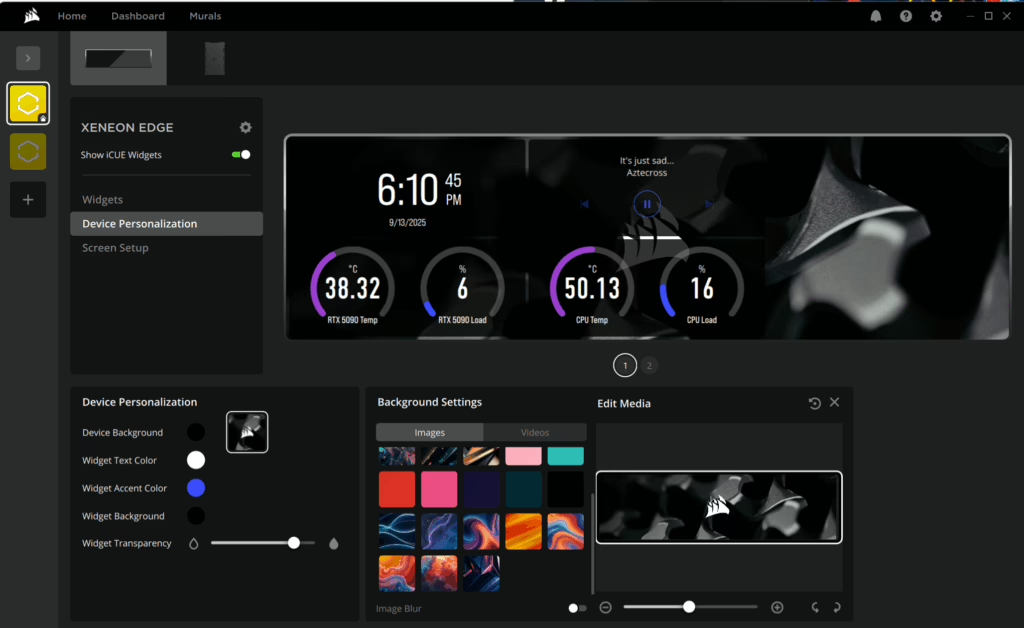
With virtual Stream Deck support baked in through its normal display function, the Edge becomes a dynamic macro surface for creators and power users—launching apps, triggering scenes, or managing lighting with a single tap. Combined with iCUE’s widget system, it invites a level of personalization rarely seen in secondary displays. It’s less about pre-built layouts and more about crafting a workflow that feels uniquely yours. 3rd party software that can easily be used elevates what this screen can do; you can also use other tools for monitoring, like HWinfo or AIDA64. It is completely up to you, and you can drag and drop any window onto the screen at any time.
While iCUE is powerful, a few quirks persist. We found that a firmware update could unexpectedly wipe our meticulously customized layouts. This kind of software dependency is a core limitation, but the potential and current functionality far outweigh these initial hiccups.
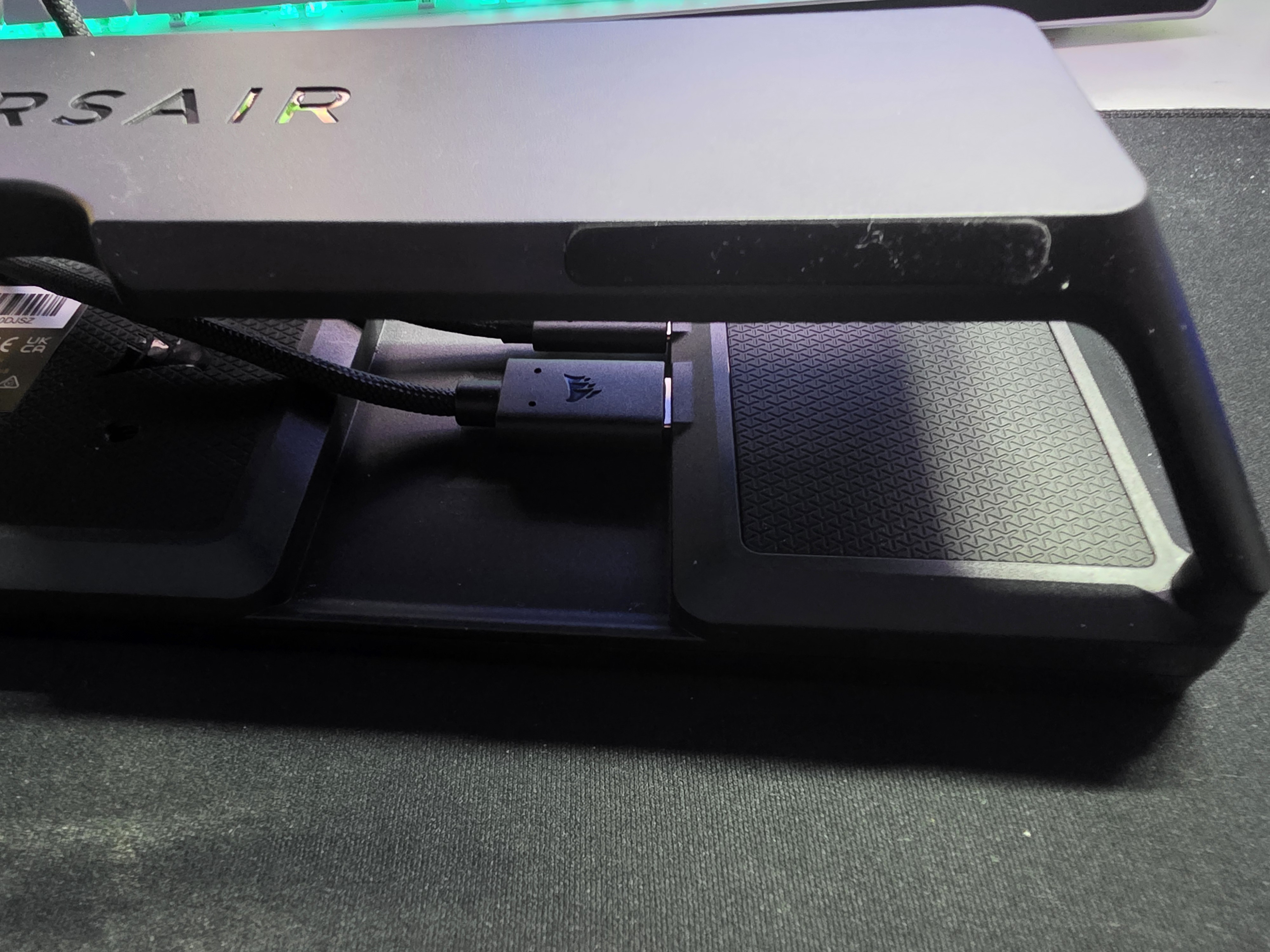
Build, Ergonomics & Real-World Impressions
Corsair’s build quality is what we’ve come to expect—sturdy plastics, a clean fit and finish, and a toughened glass front. The included magnetic desk stand isn’t too flimsy, and it’s a great option if you don’t want to use the magnets. The choice to omit physical OSD buttons is a double-edged sword: it keeps the design clean but means you’re completely reliant on Windows or iCUE for simple adjustments like brightness, which can be an annoyance if software glitches arise. iCUE is not supported on the Linux operating system, so that might disappoint some power users who do not like Windows.
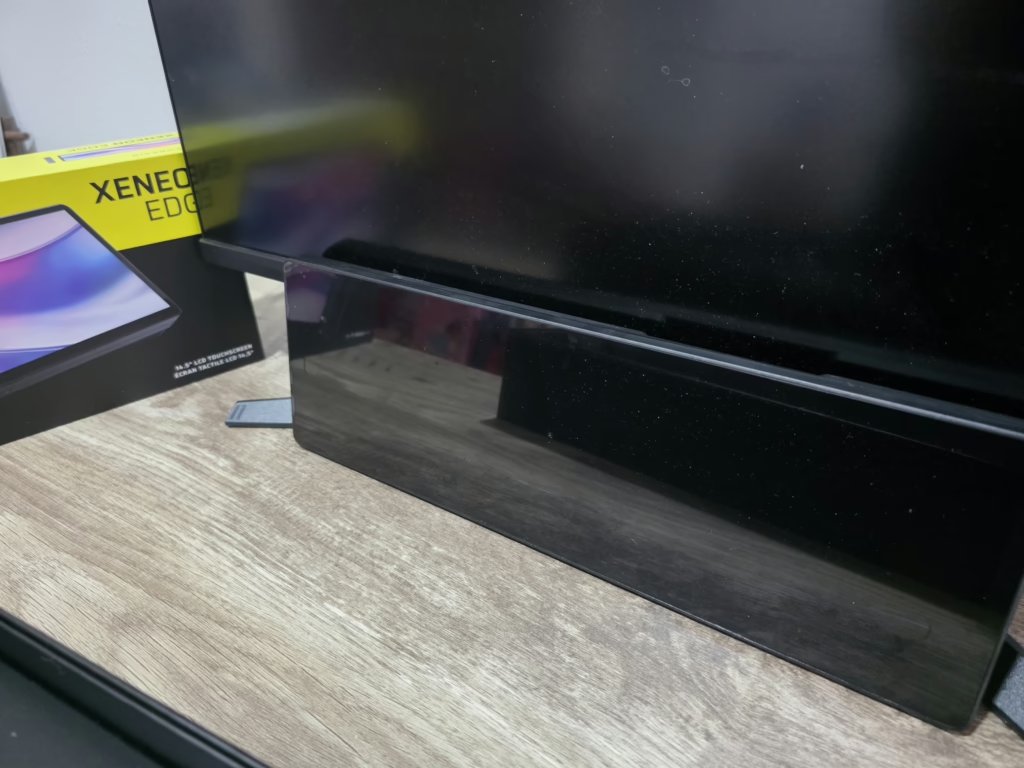
Ultimately, the Xeneon Edge can fit almost any need, but its core audience is going to love it for many reasons. For users already immersed in Corsair’s hardware and software stack, the Xeneon Edge feels instantly familiar—but it also hints at something more: a future where touch displays don’t just complement your setup, but help define it. It’s an elegant, space-saving solution that offers functionality no other single product can match. It isn’t trying to win the square-inch war against a cheap secondary monitor; it’s a specialized tool that sets a new standard for what an auxiliary panel can be.
At $249, the Corsair Xeneon Edge competes not with budget monitors, but with specialized tools like the Stream Deck XL ($199), iPad Mini (via Sidecar), or even integrated smart cases like the Hyte Y70 Touch. For users already Corsair-invested, the Edge may justify its premium through tight integration and multi-role functionality. Truly thought the Xeneon Edge’s value lies in its specialized form factor and ecosystem integration, a distinction that won’t appeal to everyone, but for me, I would rather have two major monitors to work on all day and not have to dedicate its valuable real estate to the functions a screen like the Xeneon Edge is perfect for.
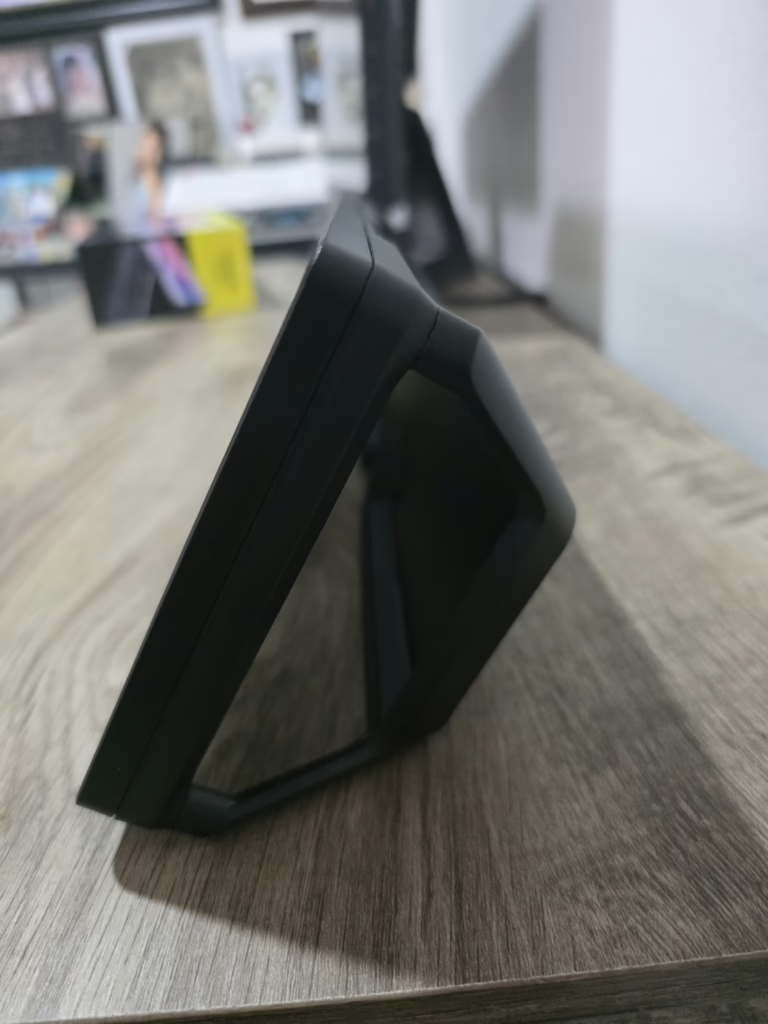
The Bottom Line
This is in the top echelon of secondary panels we have ever used. We can see the Corsair Xeneon Edge becoming a staple in all upcoming builds due to its versatility. If you’re a streamer, a content creator, a PC modder, or a sim racer already building around Corsair and Elgato hardware/software, the Xeneon Edge is catnip. It’s the most elegant, specialized “always-visible control strip” we’ve seen, offering a level of desktop and case integration that no competitor can match. For these users, it’s an awesome, if pricey, quality-of-life upgrade.
If you just need a secondary screen for general tasks, a more traditional and cheaper monitor offers far better value. The Xeneon Edge isn’t trying to win the square-inch war. It’s a premium, niche device that sets a new standard for what a workflow monitor can be. Its true effectiveness is realized when it’s integrated into a complex workflow, and for me, that meant using it not just to monitor temps, but to manage my chat feeds, media playback, and live team communications—all with a single swipe. Its orientation can also be changed in Windows from landscape to portrait, and widgets will automatically adjust.
The compact 14.5-inch form factor, versatile magnetic mounting, and responsive touchscreen are what make this all possible. Even though the glossy panel has a tendency to accumulate fingerprints, its vibrancy and punchy look give content a dynamic feel that a matte screen simply can’t match. Corsair includes a microfiber cloth—a minor but useful touch for maintenance.
Input lag and pixel response are surprisingly snappy, making widget taps and transitions feel smooth and precise. Corsair’s decision to bypass a traditional OSD in favor of iCUE control makes sense given the monitor’s potential placement inside cases, and the implementation is better than expected—even for iCUE skeptics.
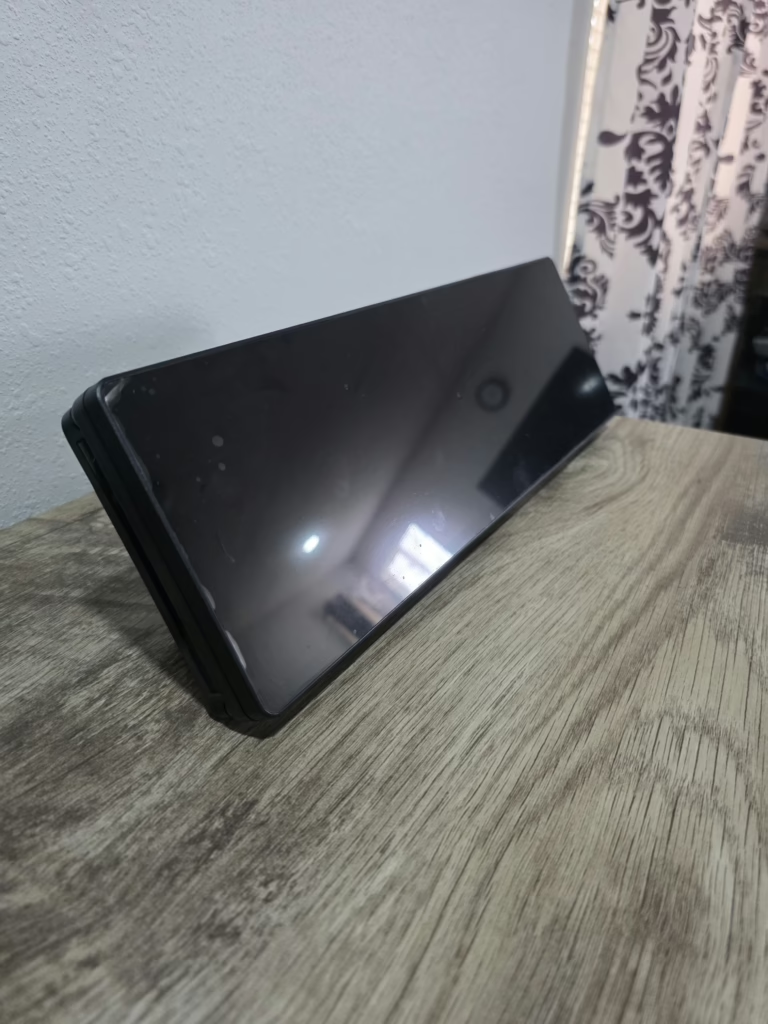
Final Verdict: Worth It, If You Know Why You’re Buying It
Perhaps the most interesting aspect of the Xeneon Edge is its immense potential. The hardware is a masterpiece of design, but the software is what will make it a truly indispensable tool. Configuration is handled via iCUE, simplifying setup for users already familiar with Corsair’s platform and its 3rd party program support. The Xeneon Edge has support integrations for most 3d party software, thanks to the iFrame tool and it being a secondary monitor. Through its software, the Xeneon Edge also directly integrates with smart home ecosystems like Nanoleaf, Philips Hue, Govee, and more.
The potential for a widget marketplace and more community-driven features is immense, and that’s where the long-term value of this device will be proven. I would love a plugin that supports OpenRGB, for example. I also heavily use Spotify, and a direct plugin for programs like this, or Slack, or OBS would be ideal without the need to rely on something like Stream Deck.
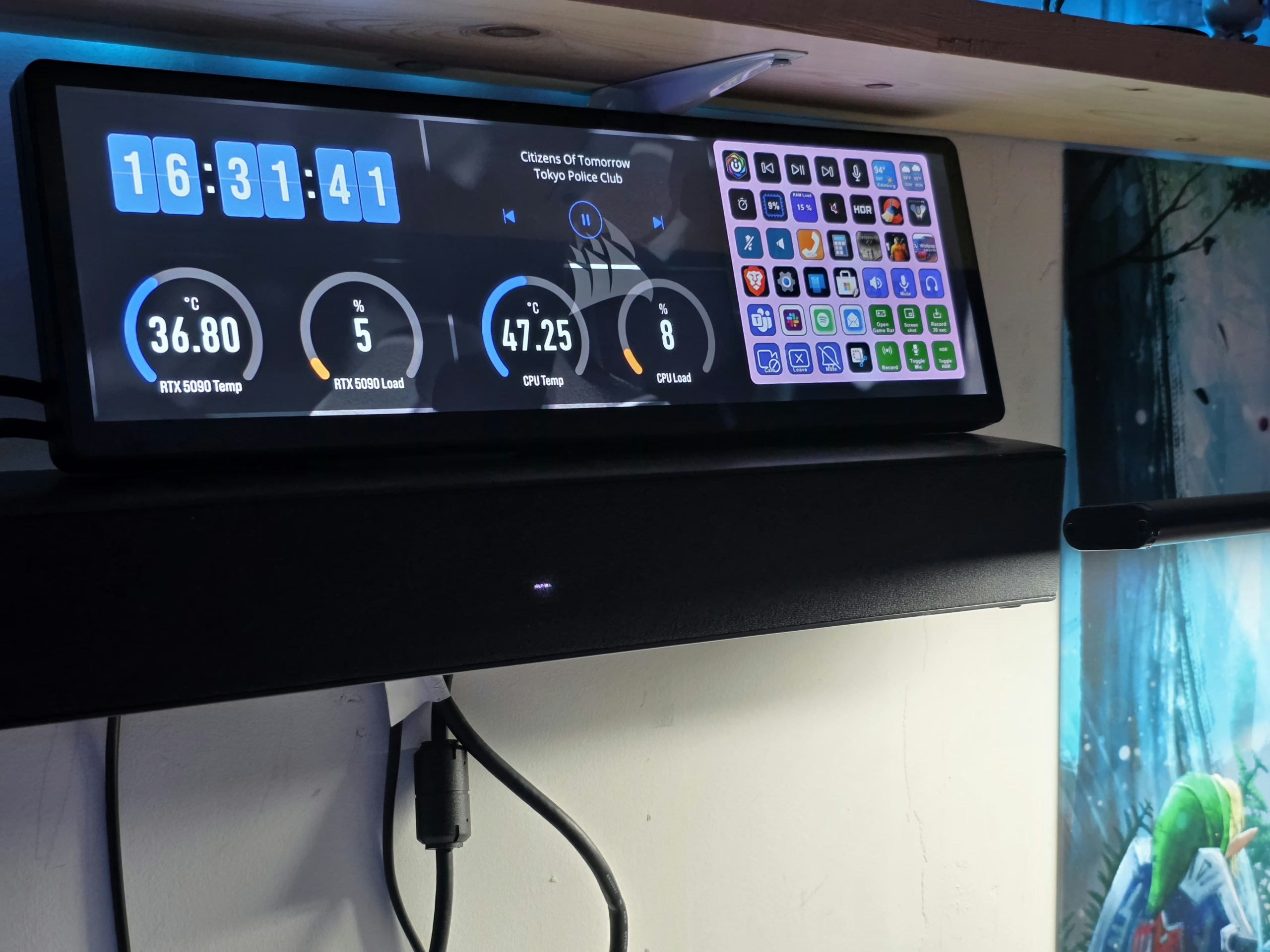

Ultimately, the Corsair Xeneon Edge manages to succeed on its own terms. It fills a niche that, until now, has not been properly addressed by major manufacturers. It’s the most elegant, specialized “always-visible control strip” we’ve seen, offering a level of desktop and case integration that no competitor can match. The Xeneon Edge isn’t just a dream peripheral for Corsair loyalists—it’s a showcase of how PC accessories could bridge the gap between hardware control and interface design. The Xeneon Edge is a compelling kit that speaks directly to the PC enthusiast’s passion for elegant solutions.
Its true value isn’t in screen size—it’s in workflow synergy. It’s the kind of device that, once properly configured, becomes invisible in the best possible way—just working, just helping, always where you need it. The real question for me, and for anyone considering this, is whether Corsair will continue to invest in the software. As it stands, the hardware is a masterclass in form and function—and if Corsair follows through on the software side, this could become a staple in enthusiast builds for years to come. The software is what will make it an indispensable tool rather than a flashy gimmick.
BTR Score: 9.0/10.
BTR Review Summary Box:
| PROS | CONS |
| Versatile: Unique form factor is perfect for chat, timelines, and dashboards. | Value: Expensive compared to a basic secondary monitor. |
| Flexible Mounting: Magnets and dual ¼-20 mounts are best-in-class. | Software Dependent: No physical controls; reliance on iCUE for basic functions. |
| Ecosystem Synergy: Deep integration with iCUE and Virtual Stream Deck is a killer feature for power users. | Limited I/O: Only USB-C and HDMI; no USB hub or DP passthrough. |
| Sharp Display: Excellent pixel density (~183 PPI) for its intended purpose. | The Glossy screen can be a fingerprint magnet |
Happy gaming!
Disclaimer: Corsair provided the Xeneon Edge for review purposes. However, no compensation was received, and Corsair had no input, preview, or influence over the content of this review. All opinions expressed are entirely my own and reflect my honest assessment of the product. Thank you, Corsair!